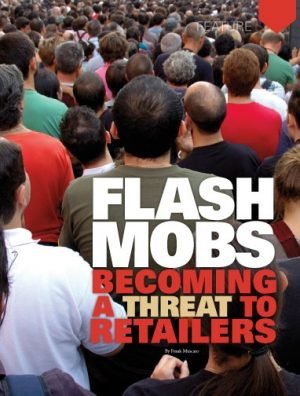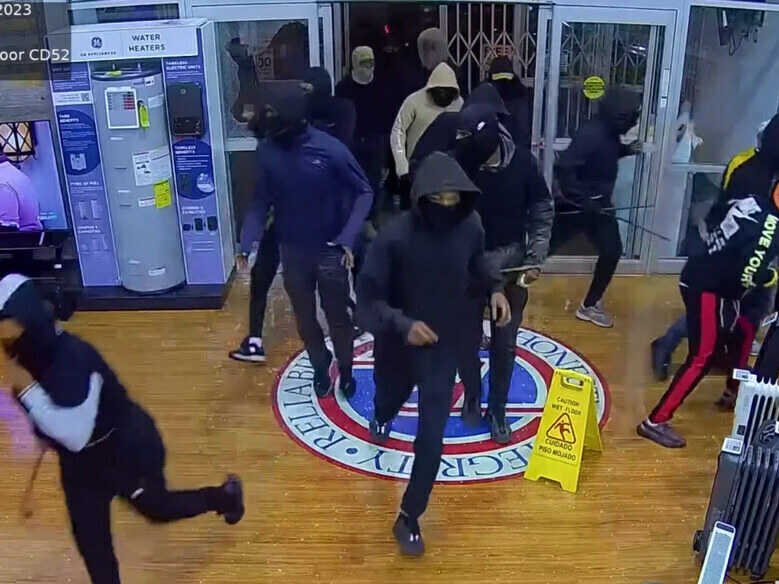Licensed to Steal: The Epidemic of Teenage Mob Theft – A Psychological Perspective
In recent years, the rise of violent, thieving mobs has become a concerning trend across the United States. These flash mobs, once seen as benign gatherings, now wreak havoc on communities, leaving victims traumatized and businesses struggling to cope. Now, this epidemic has hit New York City, leaving neighborhoods on edge and residents demanding action.
In a CBS 2 investigation, Maurice Dubois uncovered the disturbing reality of these teenage mobs. The streets of New York, once exciting with life, have become hunting grounds for groups of 20, 30, or even 40 teenagers, descending upon newsstands and convenience stores with ruthless efficiency. They ransack, steal, and inflict violence on anyone who dares to get in their way. This negative behavior exhibited by teenagers, can have profound implications for both mental health and parenting.
Of course, teens engaging in violent behavior may be struggling with underlying issues such as anger management problems, unresolved trauma, or exposure to violence in their environment. Engaging in acts of violence can exacerbate these issues and lead to further emotional turmoil. The impulsivity demonstrated by participating in such criminal activities can indicate difficulties with self-regulation and decision-making. Teens may be more prone to engaging in risky behaviors without considering the consequences, which can put themselves and others at risk of harm.
Psychological Distress: Teens involved in criminal activities may experience heightened levels of stress, anxiety, and guilt, especially if they are aware of the harm they are causing to others. These negative emotions can contribute to further maladaptive behaviors and impact overall mental well-being.
Parental Awareness and Supervision: Parents may be unaware of their children's involvement in criminal activities or may struggle to supervise and monitor their behavior effectively. Lack of parental involvement or supervision can contribute to a sense of detachment and disconnection between parents and their children, making it difficult to address underlying issues.
Family Dynamics and Support: Negative behavior in teens can strain family relationships and dynamics, leading to conflicts and breakdowns in communication. Parents may feel overwhelmed or powerless in dealing with their child's behavior, especially if they lack access to resources and support networks.
Parental Responsibility and Intervention: Parents have a crucial role to play in addressing and mitigating negative behavior in their teens. It is essential for parents to recognize the signs of distress or trouble in their children and seek appropriate help and intervention. This may involve accessing mental health services, engaging with school counselors or community organizations, and implementing strategies for positive discipline and conflict resolution within the family.
Overall, addressing the mental health and parenting implications of teens' negative behavior requires a multifaceted approach that acknowledges the complex interplay of individual, familial, and societal factors. By promoting positive parenting practices, fostering open communication, and providing access to supportive resources, communities can work towards empowering both teens and their families to navigate challenges and cultivate resilience.
Business owners like Raj Shmara, who operates a newsstand on Broadway, have been targeted repeatedly, with each attack resulting in financial losses and physical harm to employees. The increase in these attacks, characterized by their violent nature, has left communities shaken and demanding action from authorities.
However, the response from law enforcement has been muted. Despite the escalating threat posed by these teenage mobs, the NYPD declined to comment when approached by CBS 2. This lack of response has left business owners feeling abandoned and forced to take matters into their own hands.
In the face of this growing menace, many newsstands have resorted to installing their own surveillance systems in a desperate bid to deter attacks. Yet, the reality remains that these measures are often inadequate against the sheer audacity and speed with which these mobs operate.
The situation is not unique to New York City. In the Town of Wallkill, located in the Hudson Valley, a similar trend of teenage shoplifting has emerged. What was once considered a petty crime has escalated into a widespread phenomenon, with local teens brazenly stealing from stores at the Galleria at Crystal Run, a major shopping complex in the area.
The motivations behind these thefts vary, from thrill-seeking to financial gain. Some teenagers see shoplifting as a way to obtain goods without consequence, while others are drawn to the adrenaline rush of committing a crime. Regardless of the reasons, the impact on retailers and communities is profound.
Efforts to combat these crimes have been met with mixed success. Retailers have implemented various security measures, from hiring more security officers to locking up merchandise. However, the sheer scale and speed of these flash mob thefts pose a significant challenge to traditional anti-theft measures.
Moreover, the lack of comprehensive data on these incidents makes it difficult to gauge the true extent of the problem. While individual cases may capture public attention, the overall trend remains elusive, leaving communities feeling vulnerable and uncertain about the future.
In response to mounting pressure, elected officials have taken steps to address the issue. In California, law enforcement has allocated significant resources to combat smash-and-grab thefts, while cities like Los Angeles have launched task forces targeting organized retail crime.
Additionally, federal legislation such as the INFORM Consumers Act aims to hold online marketplaces accountable for facilitating the sale of stolen goods. These efforts represent important strides towards addressing the root causes of teenage mob theft and restoring a sense of safety and security to communities.
In conclusion, the rise of violent teenage mobs represents a significant threat to public safety and the vitality of local businesses. Addressing this epidemic requires a concerted effort from law enforcement, elected officials, and community members alike. Only through collaboration and decisive action can we hope to stem the tide of teenage mob theft and protect our neighborhoods from further harm.
Reference:
https://www.cbsnews.com/newyork/news/flash-mob-mayhem-violent-groups-of-teens-leave-nyc-neighborhoods-in-disarray/





